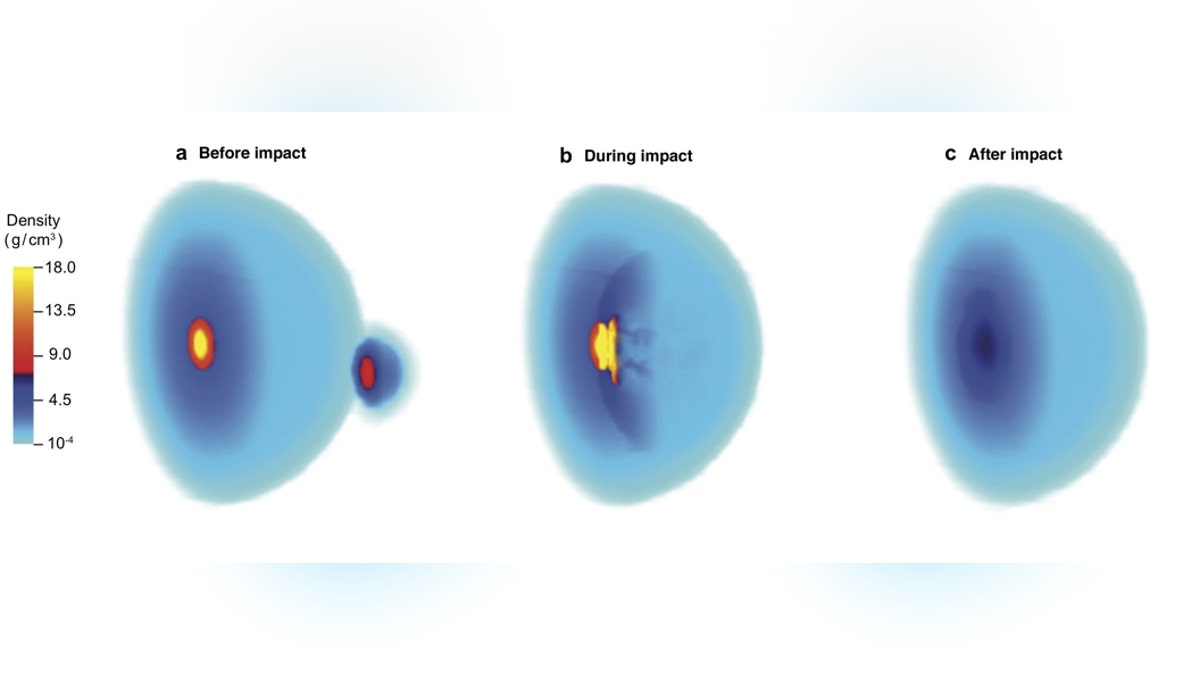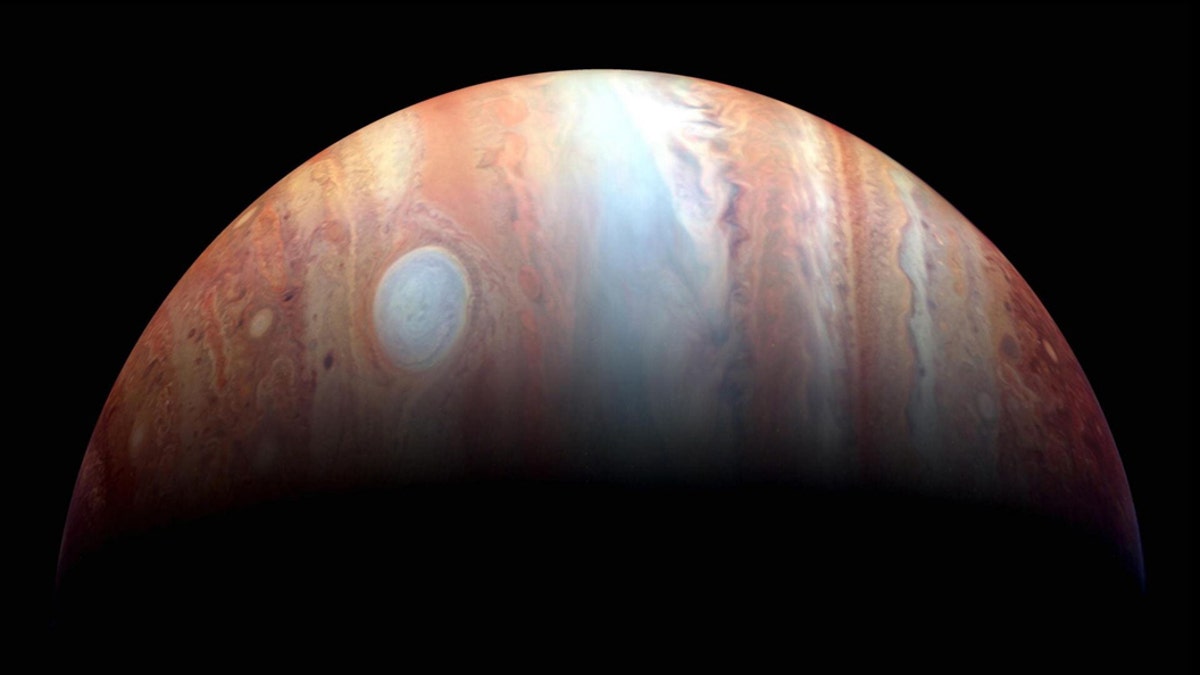Fox News Flash top headlines for August 16
Fox News Flash top headlines for August 16 are here. Check out what's clicking on Foxnews.com
The largest planet in the solar system, Jupiter, may have had a massive collision with a "still-forming planet" approximately 4.5 billion years ago, according to a new study.
The research, published in Nature, suggests that the impact is likely behind the puzzling gravitational readings from NASA's Juno spacecraft, which observes that Jupiter's core is less dense and more extended than expected.
"This is puzzling," said Rice astronomer and study co-author Andrea Isella, in a statement. "It suggests that something happened that stirred up the core, and that's where the giant impact comes into play."

A rendering shows the effect of a major impact on the core of a young Jupiter, as suggested by scientists at Rice and Sun Yat-sen universities. They say the collision about 4.5 billion years ago could explain surprising readings from NASA's Juno spacecraft. (Credit: Shang-Fei Liu/Sun Yat-sen University)
MYSTERIOUS ALTERNATING CURRENTS FOUND ON JUPITER
Isella, along with several other researchers, ran computer simulations in an attempt to explain the puzzling core and believe that the planet that hit Jupiter, which many believe formed as a rocky or icy planet and was enormous, roughly 10 times the size of Earth. The so-called "planetary embryo" that Jupiter may have swallowed could have happened within the first few million years of Jupiter's formation.
"The only scenario that resulted in a core-density profile similar to what Juno measures today is a head-on impact with a planetary embryo about 10 times more massive than Earth," Shang-Fei Liu, the study's lead author, added in the statement.
The team put together a video to indicate what the violent impact may have looked like.
It may have taken "many, many billions of years for the heavy material to settle back down into a dense core under the circumstances suggested by the paper," Isella added.
"It sounded very unlikely to me," Isella recalled, adding that it was "like a one-in-a-trillion probability. But Shang-Fei [Liu] convinced me, by shear calculation, that this was not so improbable."

An infrared color composite of Jupiter was created from images taken by NASA's New Horizons spacecraft in 2007. (Credit: NASA/Johns Hopkins University Applied Physics Laboratory/Southwest Research Institute/Goddard Space Flight Center)
Shear refers to force and stress.
NASA's Juno probe has been orbiting the celestial giant since 2016 and passes over both of the planet's polar regions every 53 days.

